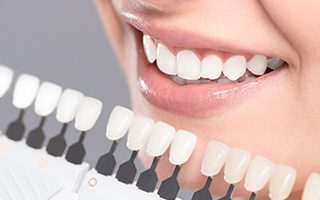PERIODONTAL TREATMENT
Periodontal Treatment
Periodontal treatment is treatment of gum disease. Gum disease is one of the most common oral conditions found in Americans, affecting over half the US adult population. It’s the leading cause of tooth loss and has been known to contribute to heart disease, diabetes, and a few specific cancers. This disease begins with inflammation or bacterial infection of the gums, which is known as gingivitis. This oral condition is easy to miss, but can be identified by a red, swollen gum line, bleeding gums, and chronic bad breath.
Over time, gingivitis causes deep growing pockets or holes within the gums, creating a perfect environment for bacteria to become trapped and grow rapidly. This is when gingivitis turns into gum disease. The buildup of bacteria slowly eats away at the teeth, which is why tooth loss is such a big factor for this disease. As a result, many patients seek periodontal treatment.
Periodontal Treatment Options
To salvage the uninfected gum tissue and eliminate the source of gum disease, there are a few periodontal treatment options to consider:
Scaling & Root Planing Therapy
This affordable, non-surgical procedure is performed under anesthesia to prevent any pain or discomfort for the patient. Scaling and root planing essentially targets the infection at the source, removing both the bacteria buildup and the infected gum tissue in one session. This procedure doubles as a cleaning and polishing treatment for the teeth while also restoring healthy gums. With minimal gum bleeding and little to no discomfort for the patient, this procedure is highly effective.
Laser Gum Treatment
This laser-assisted treatment for gum disease works with LANAP protocol to laser away the infected gum tissue and the bacteria imbedded within. The procedure uses high quality technology to gently remove the diseased gum tissue, leaving the healthy gum tissue untouched. Because the laser technology doesn’t cut the gums, there’s no need for stitches or potential infection throughout the healing process.
With an average 24-hour healing time, LANAP laser gum treatment works effectively with little pain during and after the procedure, as well as other components such as little to no gum bleeding or swelling. Additionally, this procedure helps to kickstart the regeneration of your gums once the infected tissue is removed, which assists in the regrowth of gum tissue and bone that may have been lost during the laser treatment.





